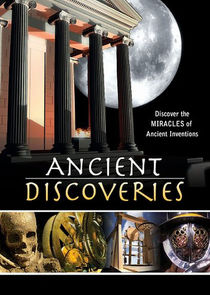Ancient Discoveries S03E09 - Robots

Sinopse
In this scintillating programme, we delve into the mysteries of ancient robots. The ancient world is littered with more references to automatic robotic machines than you might think. The mythical golden robot built by Hephaistos was fabled to roam the island of Crete three times a day, protecting its wealth. Its name was Talos, and it was famously depicted in the 1960s film ‘Jason and the Argonauts'. The gods were also supposed to have been surrounded by self moving ‘tripods', doors which opened with acoustical signals and anthropomorphic robots. We ask if there is any truth in the amazing and sensational idea that the ancients had robotic devices. We examine the robotic inventions found in the texts of Homer, and compare them with machines known in the ancient world. In antiquity, Heron and Philon were the undisputed champions of robotic invention. We look at three of Philon's most important automata inventions: the drinking horse machine, the automatic mechanism for supplying water and the automatic serving girl. Philon was working in the third century BC. We ask how he was able to create such marvels over 2000 years ago. We also look at automatic devices masterminded by Heron of Alexandria, such as robotic temple doors and the self-automated theatre. We also scrutinise the Hydraulis, an automatic water organ which was the favoured musical instrument of Emperor Nero. In an amazing discovery in Dion at the foot of Mount Olympia in Greece, the remains of a Hydraulis were found in 1992. Recently, a reconstruction was made of the instrument. It provided music for theatres, festivals and even amphitheatres. Yet the Hydraulis needed somebody to pump a bellows in order to provide an air supply. An automatic air supply was added to the machine in the shape of a small wind mill. A fully automated instrument had been created centuries before its time. For the first time in television history, we attempt to reconstruct the robotic machines of the ceremonial h
Informações
- Status: Transmitido
- Data de Exibição: 17/04/2007
- Duração do Episódio: 60 minutos
- Emissora:
 History
History